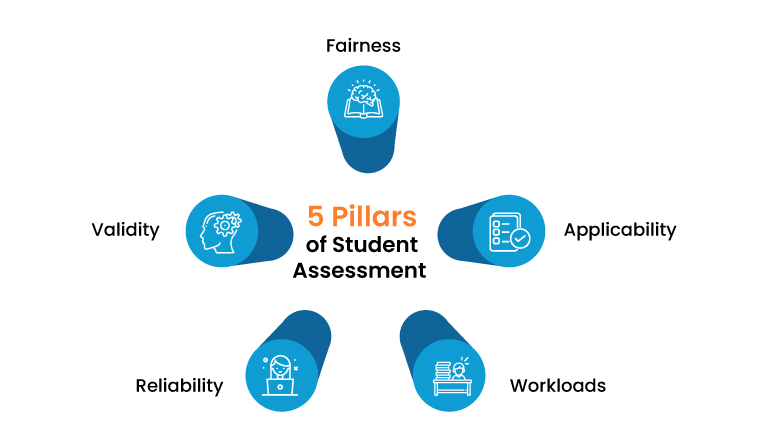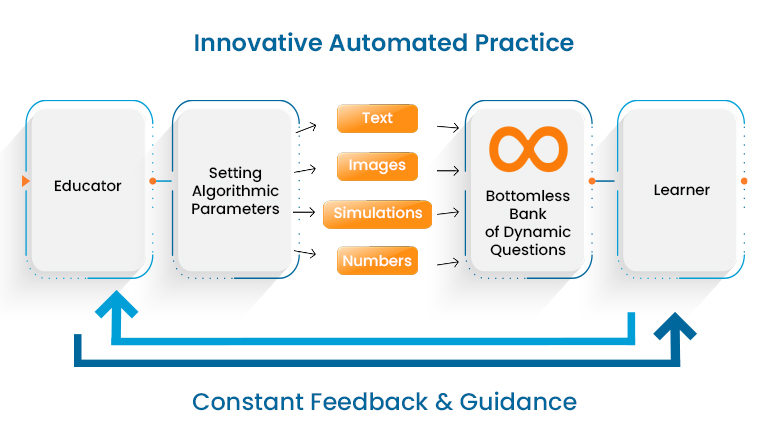Innovation in Student Assessment: The Paradigm Shift
In the realm of education, the student assessment process is the systematic gathering of information. This information is derived from the utilization of available time, knowledge, expertise, and resources to make informed decisions aimed at enhancing the learning experience.
Assessing student work not only allows educators to measure and track student progress and comprehension but also serves as a reflection of their effectiveness in teaching. Student assessment, therefore, stands as an indispensable element in the realm of successful teaching. In order to comprehend an educational system truthfully, one must scrutinize its assessment methodologies.
On a global scale, educators are seeking better ways to assess students, acknowledging various methods that can tackle challenges related to evaluating learning. The term “assessment” covers a range of required or optional activities and tasks, with the choice of assessment method influenced by disciplinary factors and the type of learning being assessed.
This is the first article of our “Smart Assessment” series, delving into the 2 types and 5 pillars of student assessment. Stay tuned!
The Two Types of Student Assessment
Assessment tasks can broadly be categorized into two groups:
- Formative Assessments
- Summative Assessments
Formative assessments are continuous evaluations, reviews, and observations conducted within the classroom setting. Educators employ formative assessment techniques to refine instructional methods and provide ongoing feedback to students throughout the teaching and learning process.
In contrast, summative assessments are employed to appraise the effectiveness of instructional programs and pedagogies, typically at the conclusion of an academic year or a predetermined period. The primary aim of summative assessments is to render a judgment on student competency at the conclusion of an instructional period. Understanding the distinction between formative and summative assessments is crucial, as it elucidates their distinct roles within the broader landscape of education.
The Era of Innovation in Smart Student Assessment
Traditionally, assessment has been viewed as a post-learning measurement, separate from the teaching process. However, external pressures on higher education institutions are driving innovations in both instruction and assessment. The diverse student body and heightened expectations for quality feedback challenge conventional methods like timed exams. Effective formative assessment becomes crucial for enhancing the learning experience, offering timely feedback, and improving performance.
In higher education, innovative forms of assessment compatible with constructivist ideas are emerging. Objective tests, small group assessments, and peer- and self-assessments are considered innovative, involving students as active participants in meaningful tasks. Innovative student assessment, in essence, introduces something new or different in an educational context, aiming to deepen student learning.
Change in assessment is motivated by the recognition that quality involves more than quantified outcomes. Traditional assessments focus on end products, ensuring external recognition of qualifications. However, innovative assessment considers personal perceptions and reactions in the learning process. While traditional methods are criticized, they remain familiar to students.
Innovative assessment tools and strategies have the potential to enhance the learning process without neglecting learner needs. Despite the acknowledgment that student assessment should evolve, many universities still rely on traditional exams. Transitioning from single test scores to innovative digital assessments sparks debates on fairness, validity, reliability, workloads, and applicability. These discussions are critical under the shifting paradigm in assessment.
The Shifting Paradigm: Five Pillars of Smart Student Assessment

Fairness
In the evaluation process, ensuring impartiality is crucial. Despite the aim to avoid bias, disparities in opportunities and resources, influenced by factors like ethnicity and social class, can compromise fairness in student assessments. Innovative digital assessment methods, theoretically, foster an environment of openness that challenges discriminatory practices. From the student perspective, fairness is integral to assessment, closely tied to the concept of validity. Traditional assessments are often criticized as inadequate measures of learning, with concerns about their accuracy and the element of luck involved. Students advocate for innovative assessments, emphasizing the importance of consistent effort and hard work over last-minute bursts of luck. While some reservations exist about the reliability of self and peer assessment, students believe the quality of feedback received enhances the learning experience.
Validity
The effectiveness of any student assessment system in education relies heavily on the validity and reliability of the chosen tasks. An assessment task, whether a test, examination, or assignment, is valid when it aligns with its intended purpose. Tasks directly tied to subject learning outcomes are deemed more valid. Assessors must carefully design tasks, articulate their purpose, and thoroughly explain the standards for expected student performance to achieve high validity, avoiding tasks that only test memorization.
Reliability
Assessment tasks are considered reliable when they consistently yield comparable results over time, markers, and methods. While reliability is often seen as a challenge in implementing innovative assessment techniques, the unreliability of some traditional practices prompts a call for reform in higher education assessments. Clear guidelines and multi-marker continuous assessments are recommended to enhance reliability. Different tutors or even the same tutor reassessing a paper may yield different marks, highlighting the need for consistent standards.
Workload
Integrating teaching, learning, and assessment in a manageable workload is crucial. While innovative assessment methods may demand extra effort initially, spreading assessments throughout the semester and involving students in marking the places where they need help can avoid congestion at the module’s end. Digital assessment methods can reduce workload through automated grading and other processes, allowing educators to concentrate on each student individually.
Applicability
The growing recognition of higher education’s role in employment preparation and the shift to specifying curricula in terms of learning outcomes necessitate the implementation of new assessment methods. Assessing generic skills alongside knowledge acquisition is vital. In mass education systems, diverse student needs should be met with formative assessments and feedback. Innovative methods like computer-assisted digital assessment offer self-evaluation, peer and group assessments, opportunities for immediate feedback, and more, encouraging reflective learning and addressing inclusiveness and diversity.
Now that we understand the student assessment, let’s discuss an innovative and effective digital assessment pathway by Möbius.
Möbius Student Assessments: Algorithmically Randomized Questions

Unlock the power of limitless self-evaluation with Möbius Algorithmic Questions – a transformative tool by DigitalEd India that opens up an infinite world of possibilities! This digital assessment pathway by Möbius allows your students to repeatedly evaluate themselves by randomizing the questions, according to your personalized algorithms.
Imagine having an endless supply of dynamic questions at your fingertips, all crafted with specific algorithmic parameters. With our user-friendly point-and-click interface, you can be the architect of your own custom algorithms, creating an unlimited array of variations tailored to your educational needs.
But that’s not all—our secure assessment feature ensures a genuine understanding of STEM concepts by preventing answer sharing, fostering a learning environment where each student engages with the material authentically.
Want to dive deeper? Schedule a personalized demo today!